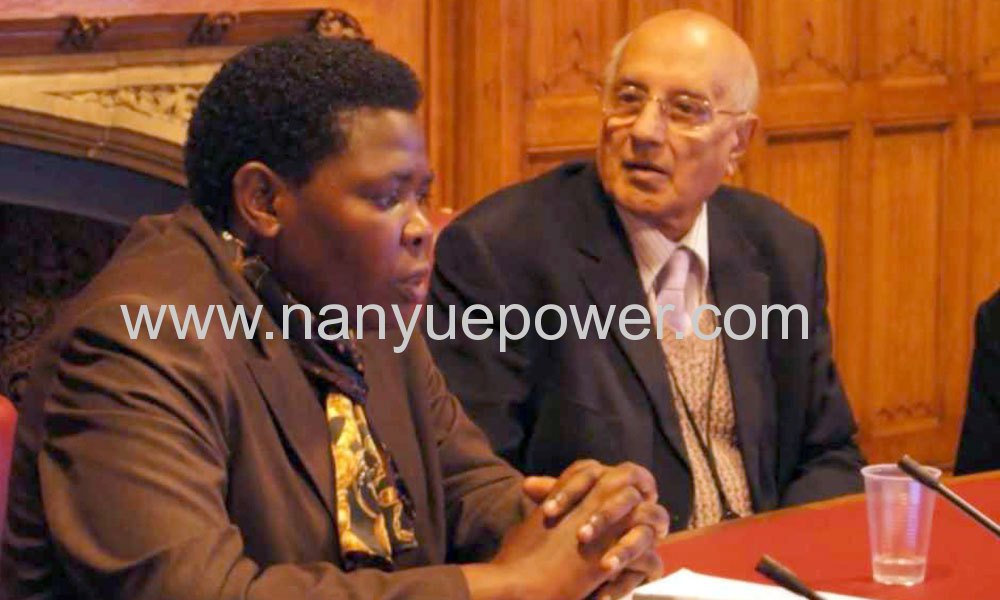
|
Yunnan Nanyue Electric Power Equipment Co., Ltd.
|
Gold Index: 40386
You are here: home > Industry News and Events > Uganda eyes Islamic Bank for $83m loan
Product (500)
-
Overhead Power Lines Conductor Tension Stringing Equipment
(137)
- Hydraulic Cable Puller (2)
- Hydraulic Cable Tensioner (1)
- Conductor Transmission Stringing Blocks (1)
- Cable Winch Puller (8)
- Anti-twisting Braided Wire Rope (1)
- Cable Pulley Blocks (6)
- Reels and Reel Stands (9)
- Reel Winder Machines (3)
- Come-A-Long Clamps And Wire Rope Grips (11)
- Compression Joint Tools Conductor Cutters (11)
- Conductor Installation Tools and Devices (12)
- OPGW Fiber Optic Cable Installation Stringing Equipment (9)
- Cable Installation Machine and Cable Tools (13)
- Miscellaneous Tools (11)
- Tackle Blocks (5)
- Tightening Tools (8)
- Conductor Lifting Hoists (5)
- Safety Tools and Accessories (6)
- Tower Erection Gin Poles (3)
- Emergency Restoration Tower and Crossing Structures (3)
- Wrenches Tools (5)
- Punch and Bending Tools (3)
- Earth Anchors (1)
- Hydraulic Conductor Cable stringing Winch Puller Tensioner (18)
- Power Transmission Line Conductor Stringing Equipment Tools (8)
- underground electrical wire cable pulling equipment & tools (8)
- Power Transmission and Distribution Line Stringing Equipment (10)
- OPGW Fiber Optic Power Cable Stringing Equipment and Tools (6)
- Conductor Transmission Stringing Cable Pulley Blocks (18)
- Aerial power transmission line powerline inspection Drones (6)
- Anti twist braided steel pilot wire rope (3)
- Industrial Digital Wireless Electronic Hand Dynamometer (10)
- Carbon Dioxide Mining Fracturing Equipment (12)
- Electrical Transformer (9)
- Current Transformer and Potential Transformer (18)
- Circuit Breaker (12)
-
Switch & Switchgear
(24)
- Universal changeover switch (3)
- Switchgear Panel (6)
- Gas Insulated Switchgear (3)
- Disconnect Switch (4)
- Earthing Switch (2)
- Load Break Switch (6)
-
Arrester & Insulator
(16)
- Arresters (4)
- Insulators (12)
- Generating Set (4)
- Wind Turbine System (5)
- Hydro Turbine System (4)
- Electrical Power Fittings (61)
- Cut-Out Fuse (5)
- Miniature Circuit Breakers (31)
- Residusal Current Circuit Breaker (21)
- Circuit Beaker (18)
- Relays (28)
- Plug Socket Coupling (1)
- Box (7)
FAQ (45)
Industry News and Events (56)
News (13)
Trade shows & Events (7)
Certificates (5)
Credit Report
Products Index
Industry News and Events
Uganda eyes Islamic Bank for $83m loan

Sunday, October 26, 2014
CRITICAL NEED: Namayanja said the Mirama-Kabale transmission project can offer sustainable power supply.
KAMPALA, Uganda - Uganda's Cabinet has approved a proposal to borrow $83,750,000 from the Islamic Development Bank in a project that will make electricity distribution countrywide more efficient.
According to information minister, Rose Namayanja, the money is for construction of a 132Kv line between Mirama and Kabale in Western Uganda. This is part of a major project to upgrade the national transmission network.
"Cabinet therefore noted the need to acquire financing for the construction of the Mirama-Kabale 132KV transmission lines and associated distribution network in south-Western, North and North- Eastern regions of Uganda.
"Cabinet also approved the proposal to borrow up to $83.75 million from the Islamic Development Bank," Namayanja said.
The Islamic Development Bank (IsDB) is an international financial institution established by the Conference of Finance Ministers of Muslim countries held in Jeddah during December 1973.
Last week, the IsDB Board of Executive Directors under the Chairmanship of IDB President, Dr Ahmad Mohamed Ali, approved $814.2 million for development financing in several countries. For fiscal year 2014/15,$5 billion in total is available.
The transmission network in Uganda comprises line voltages of 66Kv above their related sub-stations.
"It is presently made up of 101 kilometres of 220 Kv line, 1159 km of 132 and 66 Kv lines and 12 primary sub-stations. The project area covers the south-western and North and North Eastern regions of Uganda extending the national electric grid by construction of 85km of 132Kv transmission line backbone from Mirama 132/33Kv sub-stations to the proposed new 132/33KV-2x40 MVA substation in Kabale town, 904 km of 33 KV and 131 Km of low voltage (LV) network in 121 villages," she said in Kampala recently.
She said the Mirama-Kabale transmission project can offer sustainable power supply by giving sufficient power transfers from the cheap hydro-electric power in central Uganda to meet the electricity demand in the region.
"It is critical to facilitating the implementation of the rural electrification program, reducing high transmission losses, and improving system efficiency, stability and reliability," she said.
Namayanja said the project will help quicken provision of national grid electricity supply upcountry and reduce the use of small isolated electricity with small diesel fuel generators.
Plans are that the project will increase the national electricity access rate to 17% and 100% by 2017 and 2040 respectively.
Presently only about 10% of Ugandans have access to grid electricity. The majority living in rural areas rely on biomass, such as firewood and charcoal for cooking.
By Paul Tentena, Sunday, October 26th, 2014
Pre Page:
Major power failure in Uttarakhand
Next Page:
Judge to rule against Ameren in...





